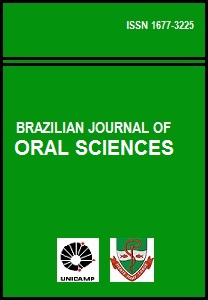Abstract
Buffalo production takes place in several areas worldwide. In Brazil, buffalo are raised mainly in the Northern region, specifically in the Marajó archipelago, where most of the herd is slaughtered for meat. This makes possible the extraction of numerous healthy teeth from these animals as replacements for human teeth in laboratory tests. Aim: To evaluate the morphology of enamel from species Bubalus bubalis as a replacement for human enamel in laboratory research studies, considering its wider availability in the Amazon region. Methods: After removal, the teeth were prepared for scanning electron microscopy (SEM). Teeth were sectioned in different planes – some were subjected to abrasion and others were merely polished for observation of surface enamel. All samples were submitted to a cleaning process, dried, sputter-coated with a platinum alloy and set for observation under SEM. Results: The SEM micrographs revealed an aprismatic surface enamel as well as prismatic enamel, the latter being similar to human enamel, in both arrangement and morphology. Conclusions: Buffalo enamel showed prismatic morphology, requiring further tests to corroborate its use as a substitute for human teeth.The Brazilian Journal of Oral Sciences uses the Creative Commons license (CC), thus preserving the integrity of the articles in an open access environment.
Downloads
Download data is not yet available.

